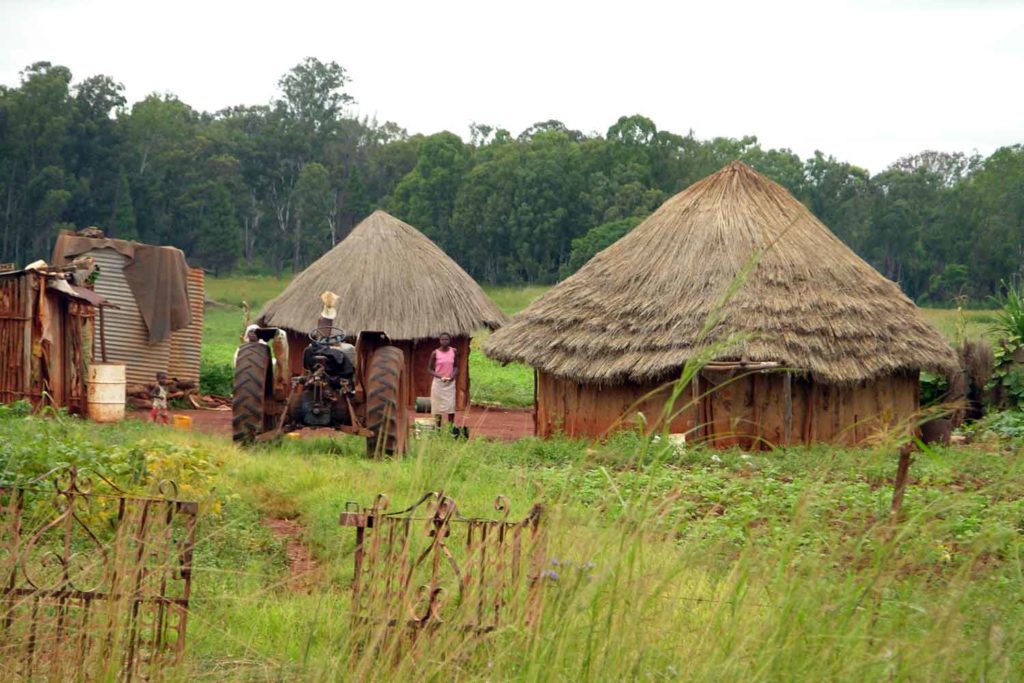
Programs to combat deforestation are gaining momentum in Zimbabwe.
By Daisy Jeremani
As Zimbabwe grapples with deforestation, of which 15 percent to 20 percent is attributed to tobacco curing, farmers, merchants and the government have taken a stand to push back the loss of woodlands estimated at 330,000 hectares per annum.
One of the initiatives involves farmers contributing a portion of their seasonal income into a reforestation fund that is managed by the Forestry Commission of Zimbabwe (FCZ), a government agency.
A second one is run by an association of tobacco merchants. Through the Sustainable Afforestation Association (SAA), buyers also contribute money for reforestation activities. The planting of trees started in 2014 with a buy-in from only six merchants, but now the number has risen to about 350 with a target of planting at least 3,000 hectares to 3,500 hectares of trees every year. So far, they have planted about 20,000 ha.
In an interview with Tobacco Reporter, SAA’s business relations manager, Lloyd Mubaiwa, said his organization was set up by tobacco merchants “so that we create a sustainable source of fuel for tobacco curing so that we reduce the decimation on indigenous woodlands by tobacco farmers.”
Besides loss attributable to the curing of tobacco, there has also been a massive decimation of natural woodlands and plantation forests due to various other factors, among them agricultural expansion, growth of settlements, infrastructure development, demand for firewood for domestic use and brick molding. Brick molding is almost the same as tobacco curing, as barns are built using bricks that would have been burned using traditional kilns, which require lots of wood to fire them up.
The FCZ estimates that 330,000 hectares of natural forest are lost yearly, and 20 percent of that loss is caused by farmers, especially smallholders, cutting wood to cure tobacco. Approximately 80 percent of tobacco growers in Zimbabwe are smallholders who rely on forests nearby to cure the leaf because they lack money to buy coal, which better-resourced larger farmers use.
A farmer using a conventional barn burns 9 kg of wood to cure 1 kg of tobacco, according to FCZ, whereas between 0.8 kg to 2.5 kg of coal are burnt to produce the same amount of leaf. A paper published by the International Journal of Development and Sustainability in 2014 said 0.6 ha of forest woodland are cleared yearly to process a hectare of tobacco.

Planting Trees
To narrow the environmental cost of leaf processing, the government put in place a statutory instrument in 2012, which requires that for every three hectares of tobacco planted, the farmer must establish at least one hectare of trees for the curing of tobacco. Under the FCZ initiative, on each sale, the government is levying growers 0.75 percent, which goes through the Tobacco Industry Marketing Board (TIMB) and then to FCZ to be used to fund afforestation projects.
Initially, merchants gave out mainly eucalyptus seeds to farmers when they came to sell their tobacco at the auction floors, but they realized that farmers did not establish any nurseries, according to Mubaiwa. After the seed initiative failed, the buyers started distributing seedlings, but, again, that failed as most of the seedlings just died under sheds at farms.
“Now what we do is a farmer gives us the area that he intends to establish a plantation. We GPS the area, draft a contract he or she signs, and then we carry out the operations that are required,” Mubaiwa said.
They sign 20-year contracts under which 20 percent of the harvest goes to the farmer and 80 percent goes toward a community fuel project. After 20 years, the plantation is handed over to the farmer and they can do whatever they want with it. SAA believes that the planation will be a lifetime investment, and the farmer should be able to harvest for the next 40 years to 50 years.
“What we are saying is [that] we have taught the farmer how to grow the trees, how to look after them, how regenerate the coppicing or the shots and also [help] him identify and access markets to maximize his share value,” said Mubaiwa.
There is also another incentive to the farmer during this partnership as SAA pays what it terms relief fees, which is money that it pays toward the farmer’s land tax obligations all the years that they are in partnership. The money is paid at $15 per ha.
SAA does not only contract farmers, but it also trains them to grow seedlings to its specifications. The seedlings are grown in floating trays that were developed specifically for forestry, which gives a good root-to-shoot ratio. The bigger nurseries are in Harare and smaller ones are in areas that the organization is planting in.
Since its formation in 2013, SAA has established approximately 20,000 ha of commercial eucalyptus plantations through long-term partnership contracts with about 320 farmers in the four main tobacco growing areas north of the country. It targets to establish between 35,000 ha and 40,000 ha of eucalyptus plantations across the main tobacco growing areas in the next 10 years for sustainable tobacco curing in the country.
Alternative Energy Options

“To augment its biomass energy drive,” Mubaiwa wrote on Zimbabwe Forestry Online in April this year, “SAA has also collaborated with recognized research institutions such as the University of Zimbabwe and the Tobacco Research Board (TRB) to explore the use of bamboo, ethanol, biogas and solar energy as alternative energy options for tobacco curing. There has been very little progress in the development of these modern technologies, primarily due to a lack of national strategies to promote them.”
The afforestation levy on growers was introduced in 2015 at a rate of 1.5 percent of leaf sales per farmer and is run by FCZ. Growers complained that the levy was too high, so the government agreed that it would be reduced to 0.75 percent.
FCZ spokesperson Violet Makoto said that although they started getting the funds from the treasury through the TIMB recently, the afforestation levy has enabled them to address the supply side of afforestation as well as enhance their research into species that can be used for tobacco curing and capacitating them to be visible to farmers and assist with Extension services.
The government agency has also set up nurseries to address the issue of seedlings’ availability in the tobacco producing Mashonaland West, Manicaland, Mashonaland Central and Mashonaland East provinces. Besides urging farmers to grow fast-growing eucalyptus, Makoto said FCZ is also carrying out research into other species that can be used—preferably indigenous species.
“So research is ongoing to try out in terms of biomass value of the different indigenous species to see if they will be suitable for tobacco curing,” Makoto told Tobacco Reporter.
She could not disclose figures on the hectarage grown under the levy, saying farmers have just embarked on this program, but she said uptake has been encouraging from large-scale tobacco growers. Makoto estimates that each of the big growers have set aside two hectares of trees for tobacco curing. The FCZ is also trying to make inroads to smaller scale farmers so that they establish community woodlots that they can harvest from.

New Technologies
In addition to replenishing forests, the government, through the TRB, is researching into, developing and promoting adoption of more energy-efficient curing options as well as renewable curing systems.
One of the new technologies being promoted is the rocket barn, which is suitable for smallholders. Invented in Malawi and adopted and further developed by the TRB, the barn utilizes 4 kg of wood to cure 1 kg of tobacco whereas the conventional barn consumes 9 kg of wood to cure 1 kg of the crop. The small diameter furnace, introduced locally in 2014, also cures 0.5 ha of crop in a five to six day cycle compared to seven to 10 days in a conventional barn.
There is also the larger, more expensive, twin-turbo barn, which is the most energy efficient model so far. According to the TRB, this technology utilizes any flammable material, including sawdust, wood and liquefied petroleum gas. A farmer needs about 1.5 kg of firewood to produce 1 kg of tobacco.
In September this year, the TIMB launched a tobacco value chain development plan that seeks to promote use of solar and other renewable technologies to gradually phase out heavily polluting wood and coal-based curing systems.
The Zimbabwe Tobacco Association’s chief executive, Rodney Ambrose, regretted the teething problems that have affected the FCZ managed program.
For three years since its launch, he said, officials bickered over how the fund was to be administered. Many opportunities were missed over the years the tobacco levy was deducted but kept in the TIMB bank account as officials differed.
“Then in 2020, a decision was made that [the] Forestry Commission of Zimbabwe should do the afforestation,” he said.
The Tobacco Farmers Union of Zimbabwe’s president, Believe Tevera, also a farmer in Mount Darwin, Mashonaland Central Province, is also critical of the FCZ initiative. He said it was high time they saw real environmental remedy though the levies as the rate at which degradation is happening was not congruent with the steps that are being taken to correct the problem.
“In Mount Darwin, we have been advocating to have that money channeled through the promotion of community-owned woodlots because we have wetlands. We can actually utilize these wetlands by planting gumtrees (eucalyptus). We can also grow the trees in gullies as there is a lot of soil erosion, which is being caused by deforestation,” he said.








 At the opening of Malawi’s selling season in April, President Lazarus Chakwera expressed dissatisfaction at what he said were “dubious” levies imposed on farmers by contractors who support production of 80 percent of the Malawian leaf. He lamented farmers’ low bargaining power.
At the opening of Malawi’s selling season in April, President Lazarus Chakwera expressed dissatisfaction at what he said were “dubious” levies imposed on farmers by contractors who support production of 80 percent of the Malawian leaf. He lamented farmers’ low bargaining power. 









